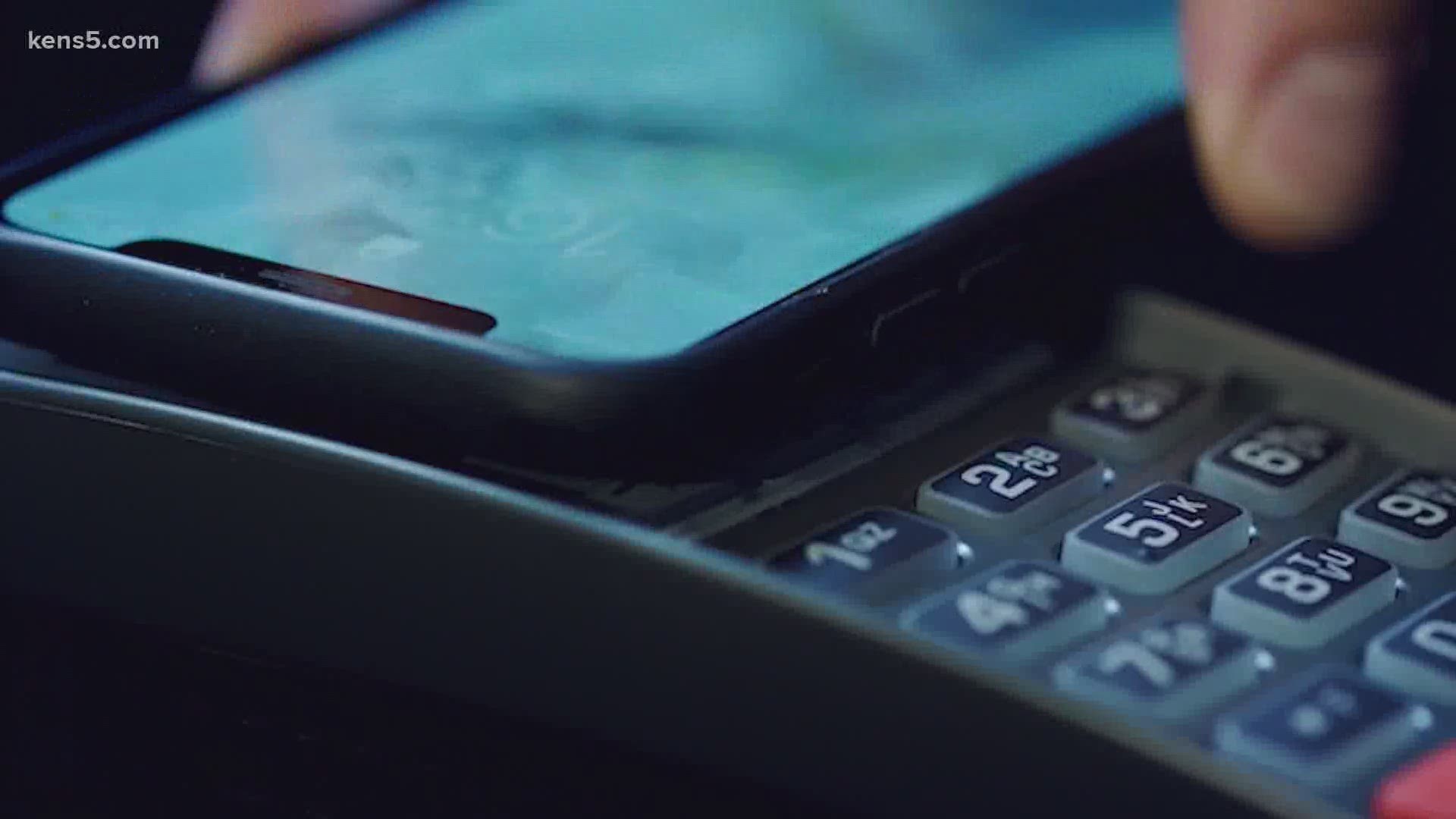We have already gone mostly cashless with credit and debit cards. Now those too might be payments of the past.
“That card reader is seeing more use than ever before and everyone’s got to go through the checkout,” said Greg Mahnken, a credit industry analyst with Credit Card Insider. “It’s a spot where not only is it a high touch point, but you don’t know who’s been there before.”
Contactless or mobile pay eliminates any touching.
“Nine times out of ten, when you tap your phone, you’re not going to have to any sort of interaction with a card machine,” said Mahnken. “You’re not going to have to type in a pin for debit card. You’re not going to have to sign.”
“Basically, I can take my phone, touch a register that’s ready to use it and the payment is done so as not to touch anything,” said Don Bush with Chargebacks 911. “Nothing has to be cleaned. It makes it easy.”
Contactless pay emits a low frequency radio signal from a credit card or cell phone to complete a purchase. Experts said it is just as safe as using a regular credit card, but use it only after putting protections in place.
“Whether it’s a fingerprint or face ID or a pin of some kind, you cannot use mobile payment without having a security lock on your phone,” said Mahnken.
That is because there is a slight risk of someone stealing your credit card information using radio frequency identification or RFID skimming.
“It’s kind of high effort compared to other types of fraud,” said Mahnken. “A thief would have to be very close to you or they have to have a device very close to your card in order to get your card information wirelessly. That usually happens on very crowded spaces like public transit or at a concert or crowded bar or something like that. With a pandemic, none of that’s really happening right now. People are keeping their distance and for good reason. That pretty much eliminates the threat right now.”
You can block RFID skimming of a credit card with a wallet that has RFID blocking or a foil card sleeve. Yet, wrapping your card in aluminum foil will also keep your card safe.
Next, always check your statements to make sure the purchases are yours.
“The nice thing about digital, you go look at your statement every day,” said Don Bush. “You don’t have to wait until the end of the month.”
Contact your bank or phone company to put a lock on your card or device immediately if you lose either, but know your card number does not exist on them.
“That’s something you can do immediately,” said Bush. “They don’t have to turn your service off or turn your contract off. You can say ‘let’s ping it, see if I know where it is.’ You’ve got that find my phone feature. They’ll let you do some of those things first to see if you left it in your car, another pair of pants or something like that, but once you’ve determined that is has been truly lost or stolen, all that’s in place to take care of.”
“The information that is broadcast as your pay is never your actual payment details,” said Mahnken. “So even if a thief were to get that card information. It’s useless. It’s a one-time use and it’s authorized only for that one payment.”
Plus, contactless pay keeps all the safety features of a normal credit card.
“They will protect you from fraudulent purchase,” said Bush. “Let your bank know as soon as possible. They’ll cancel that card. They’ll send you another one. It’ll take a few days. It’s a bit of an inconvenience.”
Coronavirus has changed many of our routines. Now it could change the way we pay.
Your credit card might already be set up for contactless pay. It would have a Wi-Fi symbol on the card if it does. Otherwise, check with your credit card issuer to see if contactless pay is an option for you. Learn more about contactless pay here.

